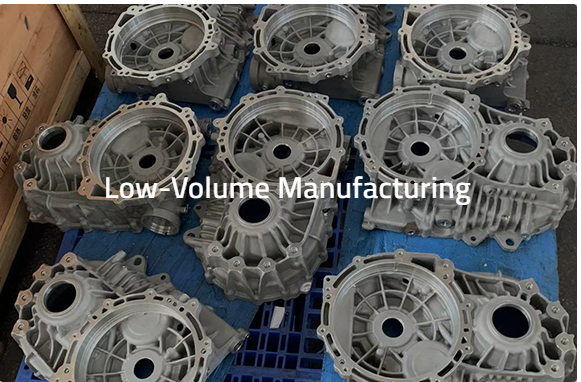Types of Aluminum Casting Processes
Aluminium casting parts manufacturing process includes several key techniques, that are used depending on the part complexity, desired precision, and available production volume. Lightweight and extremely strong, with a very low density of around 2.7 g/cm³, aluminum is suitable for a wide range of applications, from automotive parts to household items.
High volume production Die Casting
Die casting is a way to produce large volumes of complex aluminum parts widely. This process introduces molten aluminum at high pressure into a steel mold or die. The pressure is kept until the aluminum cools and solidifies. The high pressures—pressures up to 1,000 to 20,000 psi—that die casting machines can make molten aluminum also means that no matter how small the details of the mold are, they will be filled by aluminum in its molten or liquid state. This can be a very efficient process for high volume runs of thousands of identical parts with a first class finish and dimensional accuracy.
Flexibility and Cost of Sand Casting
Sand casting is the most versatile method of casting and is a key technique for manufacturing massive pieces of aluminum parts. This process consists of manufacturing a mould with a sand mixture and throwing molten aluminum into it. One of the most important advantages of sand casting is its low tooling cost and the capability to make complex geometries. Even with lower surface finish and dimensional accuracy than die casting, the lower cost of sand casting makes it still a useful option for prototyping and low volume production.

Casting: It Is Higher Precision and Smaller Details
Investment casting: Investment casting is also called lost-wax casting, generally has high accuracy and good surface finish. [] The process begins by making a wax model of the part, then the wax model is covered with a ceramic shell. After the shell drys and hardens the wax is melted out and then molten aluminum is poured into the void that the wax left behind. This method of casting is only really appropriate for parts that need to be very detailed and have very close tolerance specifications (they can hold dimensional tolerance up to ±0.005 inches.) This is a common method for precision aerospace and medical components
Permanent Mold Casting: Strong and Repeatable
A permanent mold casting consists of pouring hot molten aluminum into a steel or cast iron mold, which is heated at a specific temperature to maintain the flow of the molten metal. This allows for a better dimensional consistency and mechanical properties than sand casting. Permanent mold casting offers better surface finish and closer tolerances than sand casting and is commonly used for nonferrous metals, however it is less versatile with respect to changing design and geometry. These include automotive and industrial components where higher strength and durability are required.
Selecting the Appropriate Aluminum Alloy
The choice of the aluminum alloy used largely determines the properties and performance of the casting parts. Common alloys include:
A356: Best castability, reasonable weldability, corrosion resistance Its applications are common in the automotive and aerospace industry.
A380: This versatile alloy possesses good mechanical properties, provides excellent castability, and can be cast with much thinner walls. One of the good places to use this type of resin is for complex and delicate parts as it has a high fluidity.
Finishing Of Production And Quality Control
Quality control of aluminum casting is another very important part of the process. That is, x-ray inspection, dye penetrant testing, etc. to verify there are no porosities, cracks, etc. in anything but the exterior surface of the components. Casting after parts can be done some finishing operations such as heat treatment to improve the mechanical properties, machined to get the right dimensions and alignment between parts and in others cases to the application of surface treatment for corrosion resistance or improved appearance, such as anodizing or painting.
When manufacturing aluminum casting parts, great attention should be paid to the overall design, production process, and material selection to manufacture parts that meet the relevant specifications and performance standards that are in place. The Advantages of Each Casting MethodEvery casting process offers its unique advantages and so, choosing the best process depending on the needs of the project is of utmost importance.
